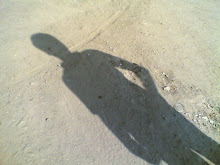
One misty wintery morning of January, after the
Fajr Namaaz, eyes wake up. It’s too lazy to get out of the warm quilt. An aroma attracts. You slip on to your jumper, wear a woolen cap and start walking towards
Kaali Masjid.
A sweeper is cleaning the narrow and dingy lanes; box rickshaws carrying school children are streaming the
galees and
koochas of
Purani Dilli. As you walk a little bit, groping your way in the foggy roads, a clink of a larder attracts your attention, the aroma grows even stronger. A Nihari shop is found.
Nihari is an extremely popular dish among Muslims in India and even Pakistan. The word Nihar has its root in the Urdu word
Nahaar, which means morning. Hence Nihari is traditionally eaten in the morning.
Known for its spiciness and taste, Nihari is a stew made from the shank of beef (or mutton) and spices. It is originally more of a delicacy with myriad variations on spiciness and texture.
Legend has it that in the Mughal era, a rich man fell ill with severe cold. A
Hakeem prepared a medicine for him to be eaten empty stomach. After the man had had the medicine, his cold vanished.
That medicine kept modifying with time and came to known what now is Nihari.
Initially, it was a dish of the Muslim upper class society in Delhi but soon transcended its aroma to the other classes as Muslim ascendancy and power declined.
Today, Nihari is a rich man's delight and a poor's neccessity.
Famous Nihari shops in Purani Dilli•
Kallu ki Nihari, Chatta Lal Miyan, Behind Delite Cinema. It’s undoubtedly the best Nihari in the entire Delhi. Be there at around 4ish in the evening. If you are lucky, you can partake of his 30-kg degh, which cleans-up within barely 15-minutes of Bhai Kallu taking the lid off the degh.
•
Qadeer ki Nihari, Gali Khan Khana, Inside Turkman Gate. Very authentic, finger licking, ‘intoxicating’. Available early morning. After the death of Bhai Qadeer, his sons have failed to maintain the age-old legacy but it’s not as disappointing as other Nihari shops that have mushroomed up in
Dilli 6.
•
Baradari, Ballimaran. One of the oldest Nihari shops, where even Mirza Ghalib used to frequent- to savor the Nihari and perhaps to pen the couplets.
•
Baaray ki Nihari, Sadar Bazar. Once a very famous, now trying to live upto its old name and fame.
And finally, the
recipe ;)
Ingredients1 kilogram of Beef (with bones)
3 medium Onions (thinly sliced)
2 tbsp. of All-Purpose Flour (Maida)
1 small piece of Dry Ginger (Sounth)
2 Small White Cardamoms (Choti Safaid Ilaichi)
2 Bay Leaves (Tezz Pattay)
1 Cinnamon Stick (Dal Cheeni)
2 tsp. of Garam Masala Powder
2 tbsp. of Aniseeds/Fennel Seeds (Sounf) (grounded)
1 tsp. Red Chilli Powder (Pisi Lal Mirch) (or to taste)
2 pinches of Nutmeg
½ tsp. Turmeric Powder (Pisi Haldi)
Salt (to taste)
1 small piece of Black Salt (Kaala Namak)
1 tbsp. Garlic Paste (Pisa Lehsan)
1 tbsp. Ginger Paste (Pisi Adrak)
½ cup Plain Yogurt
½ cup Clarified Butter (Ghee) or Cooking Oil
Ingredients for Garnishing
1 medium Onion (sliced, fried to brown and dried) (or a cup of ready-fried onions)
3 Green Chillies (Hari Mirch) (chopped)
1 (2" piece) of Ginger Root (Adrak) (cut in strips)
A bunch of Fresh Coriander Leaves (Hara Dhania) (chopped)
1 Lemon
NulliesBhejaDirectionsIn a pot, heat the clarified butter or cooking oil. Once the oil gets hot add in the 3 sliced onions. Turn the stove down to medium. Fry the onions to golden brown. Remove from oil and put the onions on a paper towel to absorb any excess oil. Crush the onions.
Add the meat and garam masala powder (whole spices), plain yogurt , ginger paste, garlic paste, salt, red chilli powder, bay leaves, cinnamon and turmeric powder, continuously fry by stirring until the oil separates.
Add in the nutmeg, cardamoms, aniseeds and black salt. Stir, add in enough water to cover meat and cook on low heat covered for 2 to 3 hrs.
Once the meat is cooked and tender, add in the flour and cook on low heat for about another 10 minutes.
Garnish with coriander leaves, fried onions, green chillies ginger strips, lemon juice,
nullies and
bhejas.Serving Suggestions: Serve Hot with Chapati Roti or Nan
Preparation Time: 3 to 4 Hours


